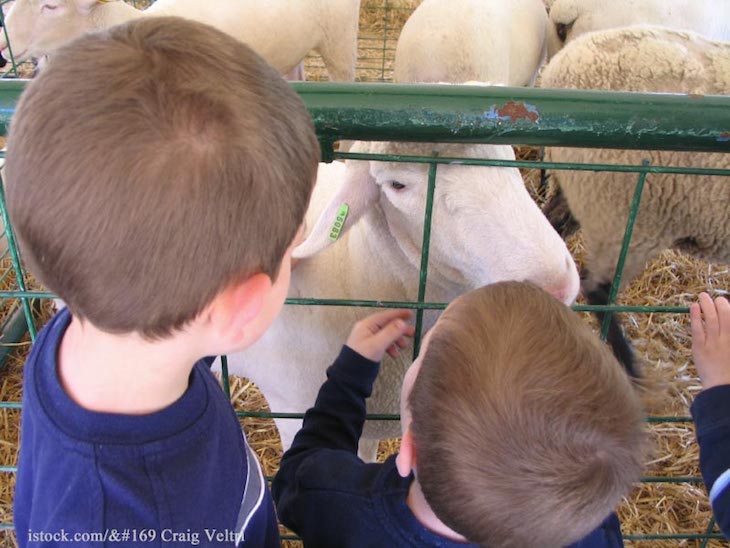An E. coli O157 outbreak associated with the Minnesota State Fair has sickened 11 people, according to the Minnesota Department of Health (MDH). This Minnesota State Fair E. coli outbreak was announced today. Evidence suggests that contact with livestock is a “key factor” in this outbreak.

Patients interviewed by public health officials say that they visited the fair between August 25, 2019 and September 2, 2019. Illness onset dates range from August 29, 2019 to September 6, 2019. Whole genome sequencing indicates that the E. coli O157 strains are closely related.
Six people were hospitalized; one remains in the hospital. One person has developed hemolytic uremic syndrome (HUS), a type of kidney failure that is potentially fatal. Cases range in age from 2 to 43 years. HUS is most common in children under the age of 10.
Most of those sickened visited the Miracle of Birth exhibit and had direct contact with calves, goats, sheep, or piglets. Ruminant animals such as goats and cows can carry E. coli bacteria in their intestines without appearing ill. The bacteria is shed in the animal’s feces, which then contaminate the animal’s coat and its environment, including fences, gates, bedding, and the floor. In fact, some cases did not contact animals and may have been exposed through contaminated surfaces such as fence rails.
MDH State Public Health Veterinarian Joni Scheftel said in a statement, “These infections can have serious health impacts and there is always a chance that an ill person can pass along the infection to others through close contact. Anyone who believes they may have developed an E. coli O157 infection should contact their health care provider. E. coli O157 infections should not be treated with antibiotics, as this might lead to serious complications.”
Dr. Scheftel added that since the fair ended on Labor Day, there is little chance of ongoing exposure.

You can contact attorney Fred Pritzker for help by calling 1-888-377-8900.
Minnesota lawyer Fred Pritzker, who has represented many clients sickened with E. coli infections and HUS, said, “Sadly, this is not the first or last E. coli outbreak associated with fairs and contact with animals. No one should get seriously ill just because they went to a fair.”
E. coli O157 produces Shiga toxins, which attack the lining of the intestines. The toxins also kill red blood cells, which can damage the kidneys and cause strokes and seizures. The symptoms of a Shiga toxin-producing E. coli infection include severe and painful stomach cramps, along with diarrhea that is usually bloody. Some people may also have a mild fever, nausea, and vomiting. Symptoms of hemolytic uremic syndrome include little urine output, easy bruising, lethargy, and pale skin.
Anyone who is experiencing any of these symptoms should see a doctor as soon as possible. You may be part of this Minnesota state fair E. coli outbreak.
This outbreak is a reminder that it’s important to wash your hands thoroughly with soap and water after visiting animal exhibits at state and county fairs and at petting zoos. In addition, never bring food to these venues, and watch children carefully when they are around animals. Never let them put their fingers in their mouths after they have touched animals or anything in these environments.
Unfortunately, this is not the first E. coli outbreak associated with a fair or with animal exhibits. Earlier this summer, a deadly E. coli outbreak at the San Diego county fair sickened 11 people. One child died. An E. coli outbreak at the Mesa County fair in Grand Junction, Colorado in 2017 sickened eight. In 2012, an outbreak at the Cleveland County Fair in North Carolina sickened more than 100 people; one child died.
And in 2016, an E. coli outbreak at Dehn’s Pumpkin Patch in Dayton, Minnesota sickened at least seven people. The law firm of Pritzker Hageman sued on behalf of a child who got sick after visiting that venue, and developed HUS. The verdict was for $7.55 million.




